As summer starts to make its transition into fall, we start to think of upcoming frosts. Whether those frosts are a day or weeks or a month, or more away, makes tomato growers start to think about maximizing the harvests from their plants. And that makes us think of all those green tomatoes, just sitting unripened on the vine.
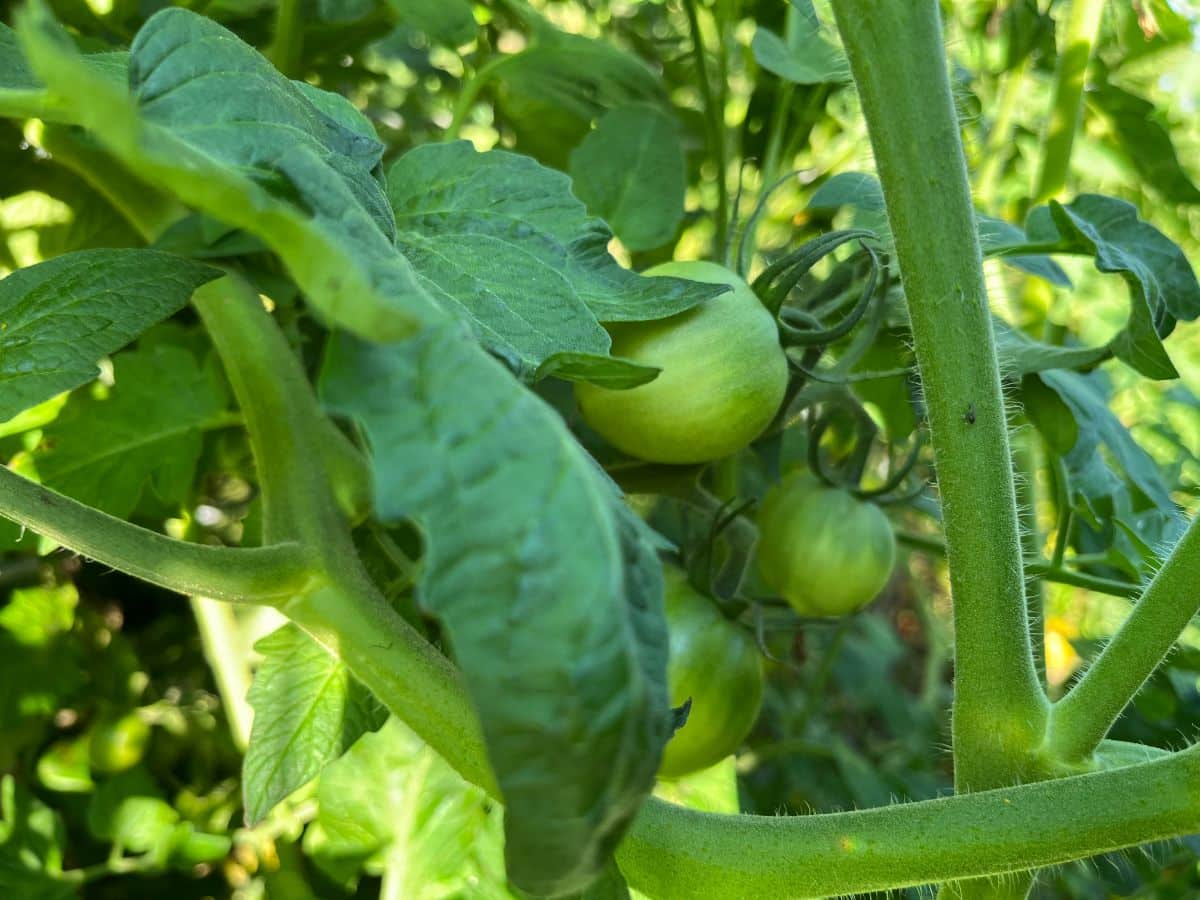
The problem looms larger as we get nearer to our first frost dates. These dates are, of course, averages based on historical dates when we see our first frost. These dates are also different for growers in different areas. Nonetheless, we know that the first frost spells the end of tomato growing for the year.
Jump to:
- Time to Start Thinking About Ripening Green Tomatoes
- 1. Know when to pick green tomatoes.
- 2. Arrange picked tomatoes by color and ripening stage.
- 3. Use blemished or damaged tomatoes first.
- 4. Check ripening and ripened tomatoes every other day (or daily if you have the time).
- 5. Keep an eye out for pests and fruit flies.
- 6. Do not refrigerate.
- 7. Leave the stems on.
- 8. Give tomatoes a confined space (or spaces) for ripening.
- 9. Aim for ideal moderated temperatures for ripening.
- 10. Use other fruit to speed up ripening.
- 11. Cold store some of the last and least ripe tomatoes.
- 12. Late-season tomatoes can be ripened on the plant indoors.
- A Trick to Test for Tomato Maturity
- Removing Green Tomatoes to Ripen Off the Vine Helps Remaining Tomatoes Mature and Ripen
- Flavor Is Just as Good from the “Breaker” Stage of Ripening and Beyond
Time to Start Thinking About Ripening Green Tomatoes
As fall approaches, if you have many green tomatoes still on the vine, you should start thinking about picking some off and ripening them off the plant. There are several things you can do to make this more successful for you.
Employing these tips will help speed up the ripening process and make ripening more uniform and complete. They will help you get as many ripe, red garden tomatoes as you possibly can and help you get the most use out of your garden and the tomato plants you’ve grown in it.
1. Know when to pick green tomatoes.
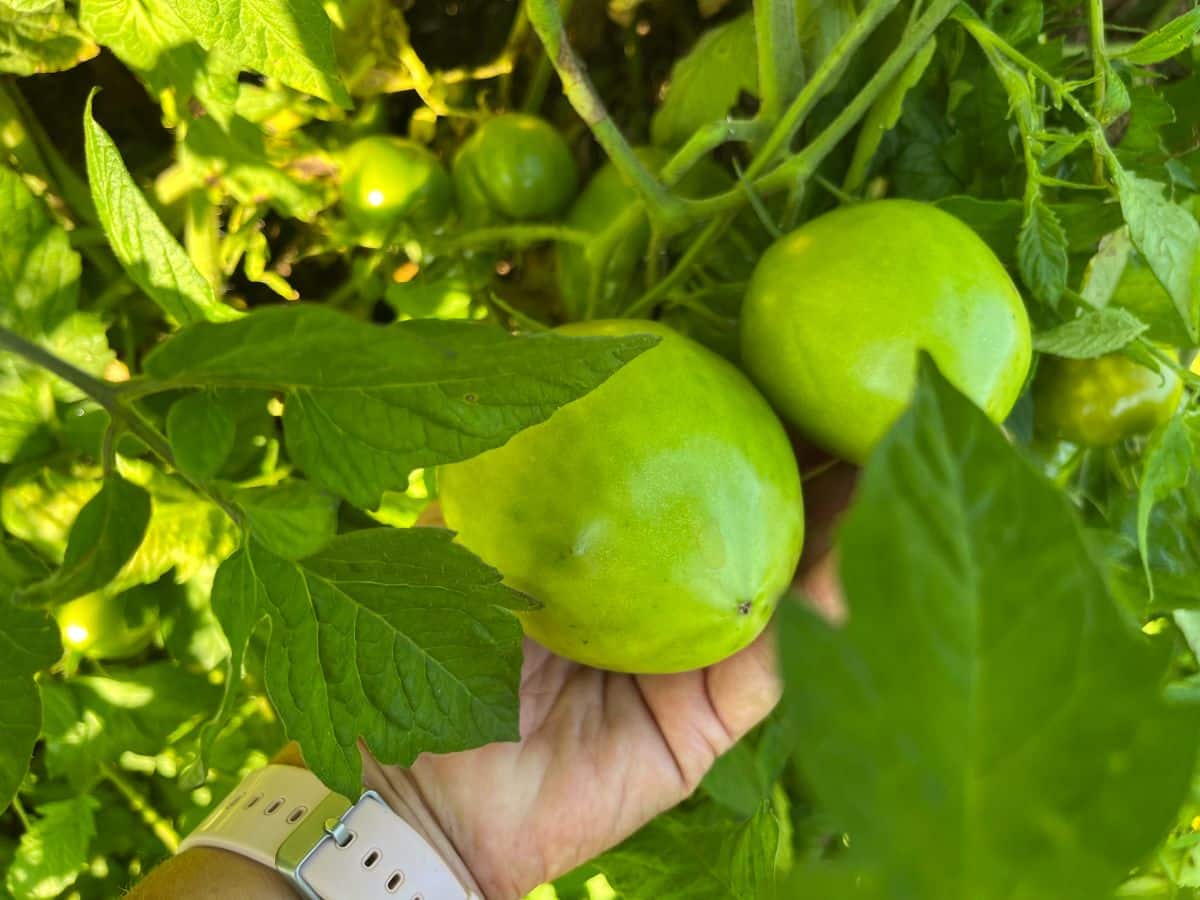
For tomatoes to ripen off the vine, they can’t be picked too early. The tomatoes need to be left on the vine until they are mature enough to ripen. Once they have reached this point, they can ripen either off the vine, indoors, or outside on the plant.
There are some telltale signs that tomatoes—even fully green tomatoes—are reaching the point of readiness for ripening. Look for tomatoes that
- Are mature in the “mature green stage”
- Are full-sized for the variety you are growing
- Have a star-like appearance at the blossom end of the tomato. The “star” will be a lighter, almost white shade.
- The bottom of the tomato (blossom end) should be smooth and well-rounded, filled out like a ripe tomato, and not bumpy.
- Have a slight blush, if possible, to wait for that stage
- When it’s possible to wait, wait until they show a tinge of color change at the blossom end (the end opposite the stem)
- Tomatoes start out a darker green before they are ready to ripen, then lighten as they begin to turn to light pink and then red. So, look for lighter green and shiny tomatoes.
- Mature green tomatoes should have some give to them and should not be hard or solid feeling when lightly squeezed.
- Mature tomatoes getting ready to ripen will have some shininess to them, while immature tomatoes will remain darker green and dull.
If the tomato isn’t mature enough to ripen, it won’t ripen off the vine, either. It may be worth chancing at the end of the season when a frost is predicted, but before that, take the time to make sure the fruit is ready enough to ripen. There’s a trick to test for this that you can read about later in the article.
2. Arrange picked tomatoes by color and ripening stage.
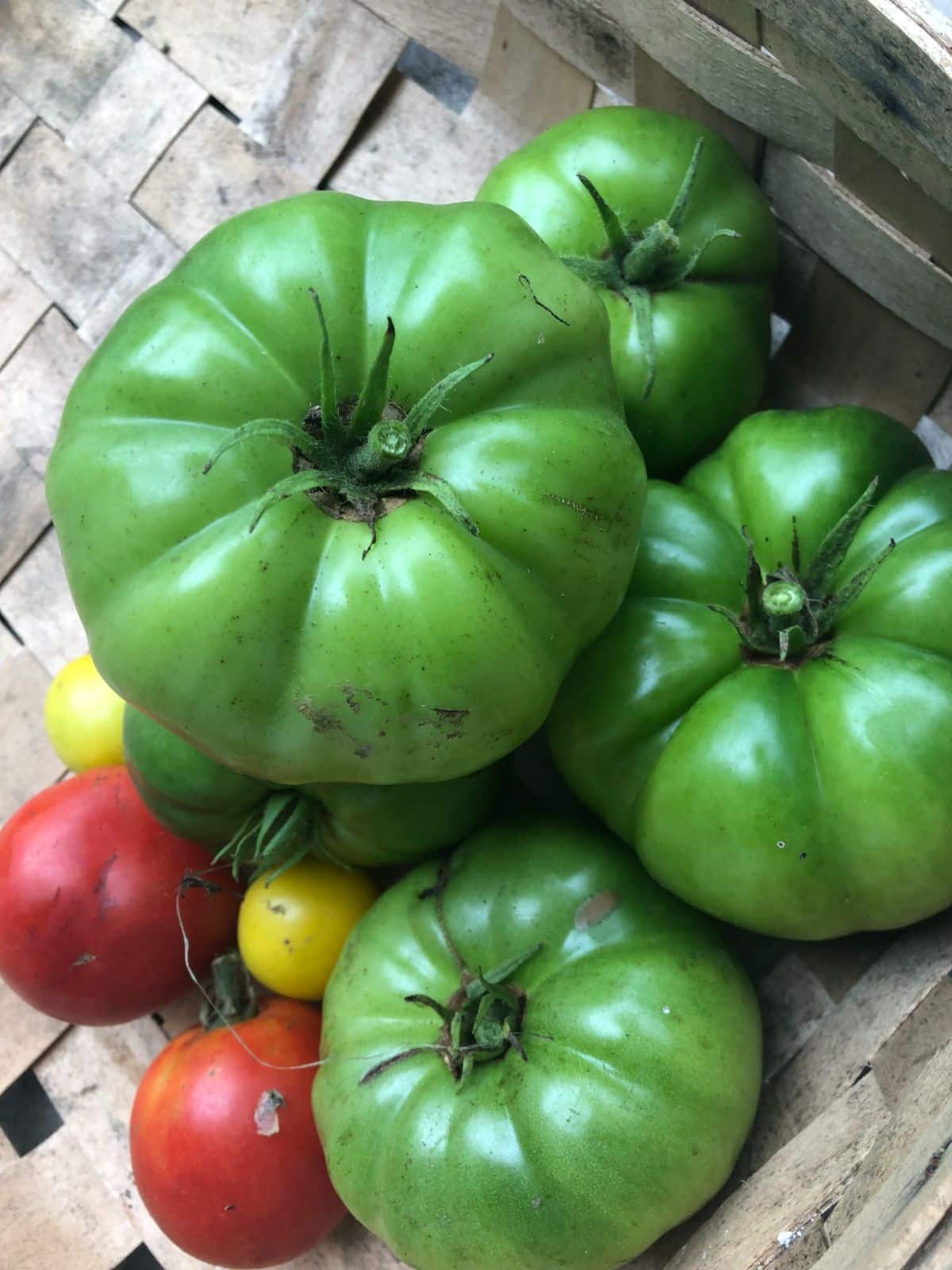
After you pick your tomatoes, sort them into categories by their level of ripeness. You do not have to get this exactly perfect but do try to group tomatoes that have a similar level of ripeness and color.
For example, all green tomatoes should be together in one set. Tomatoes with some partial color (less than half) would be a second. More than half ripe would be a third, and almost ripe or all red tomatoes should be grouped together in a fourth grouping.
Once picked, the tomatoes will generally ripen at about the same pace depending on where they are in the ripening process. Having them pre-sorted by the level of ripeness means you will have batches that ripen uniformly, and you’ll be able to easily see how much you have ready (or almost ready) at a given time. You can see at a glance if you have enough ripe tomatoes to use in a given recipe or for a canning session.
This also saves time later when you don’t have to sort through your whole harvest to find a set of good tomatoes that are ready to eat or preserve. You won’t have to keep sorting through the same set of tomatoes over and over again, either.
3. Use blemished or damaged tomatoes first.
If you have tomatoes with blemishes or damage that you want to try to ripen, put them together as one group. Use these as soon as they are ripe, and use them ahead of any other, unblemished ripe set. Ripe tomatoes without damage or spots will last longer than tomatoes with a spot or two.
If tomatoes are heavily damaged or rotting, get rid of them. They’re just not worth spoiling the rest of your tomatoes.
4. Check ripening and ripened tomatoes every other day (or daily if you have the time).
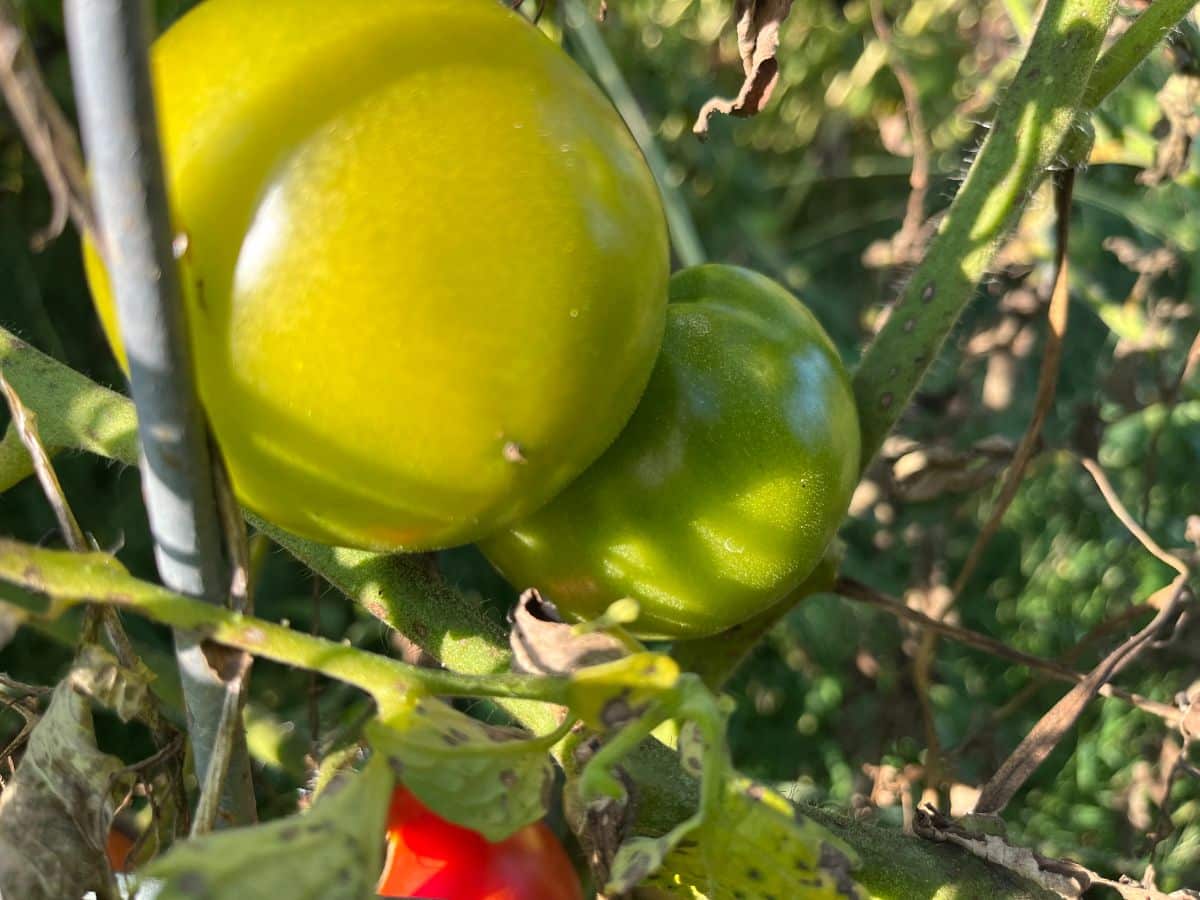
Quickly check over the tomatoes you are ripening on a regular basis. Daily is great, but every other day should be good, too. You do not want any decaying or rotting, overripe tomatoes sitting in with other good fruits because they will cause them to rot, too.
Keep an eye out for liquid in the box or basket, leaking fluids, or signs of mold or softening from rot.
As you check, give the tomatoes a good sniff test, too. Depending on the ripeness level, your tomatoes should smell either green (similar to the way the tomato plant itself smells), or like a fresh tomato. If you smell anything rotten or anything sour or fermented, start looking for the offender. Smells like that only come from rotting fruit.
5. Keep an eye out for pests and fruit flies.
Pests like fruit flies are often a good sign that something is leaking, broken, or going bad. If you see fruit flies around your tomatoes, give them a good going over and clean out anything that has gone bad. If other tomatoes got juice on them from rotting tomatoes, wipe them with vinegar. If they’re intact and in good condition, they’ll be fine, but you will want to remove any potential decay-causing pathogens.
6. Do not refrigerate.
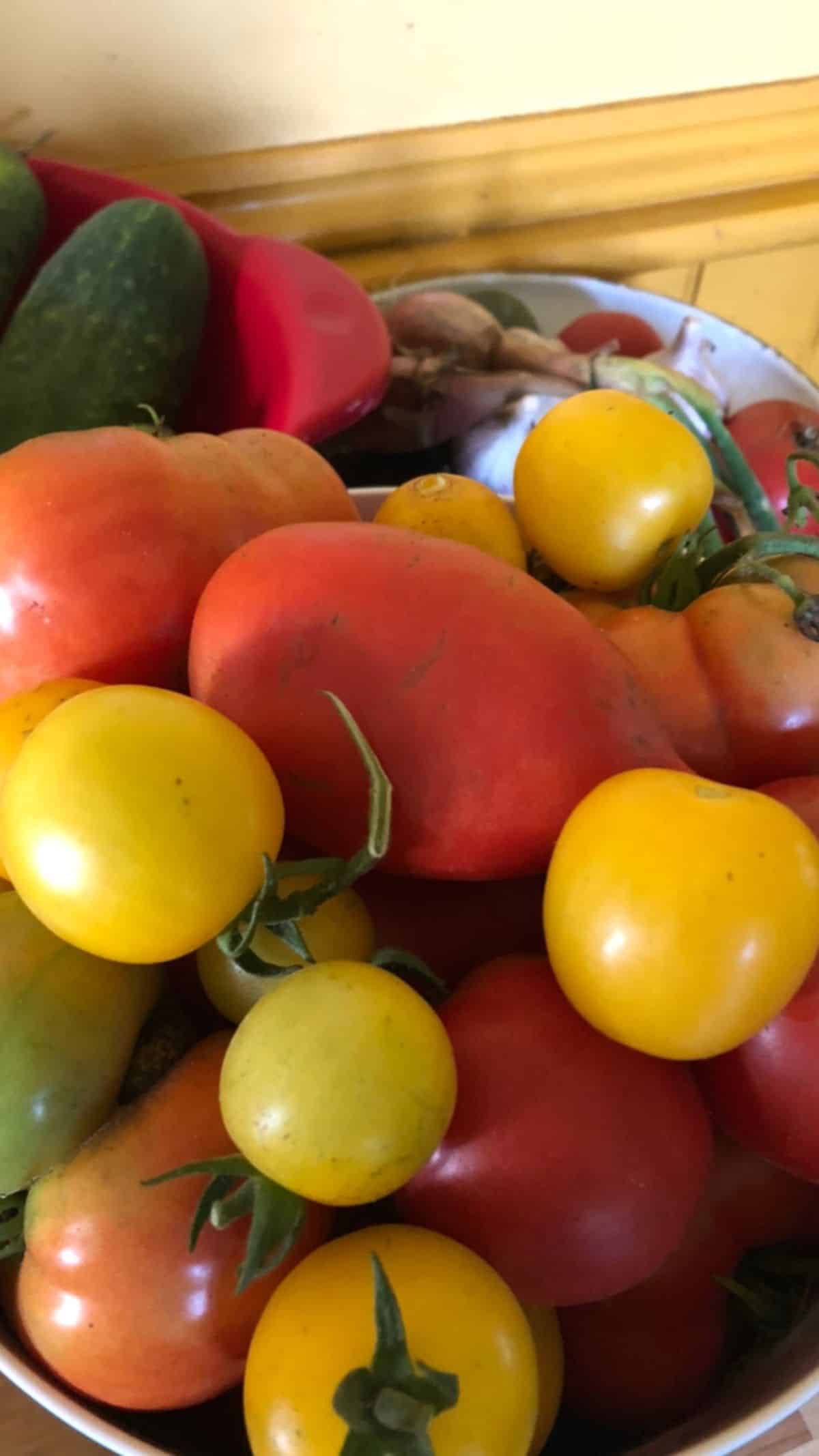
Tomatoes don’t need light to ripen, but they do respond to temperature. And once you refrigerate them, they will not continue to ripen. The low cold temperatures of the refrigerator will halt the ripening process. If tomatoes are fully ripe, they can be refrigerated, but it’s not that necessary, and their flavor will be much, much better if you don’t. Tomatoes also lose flavor and become bland in the fridge. They can get a mealy texture, too.
For the ripest and best-flavored tomatoes, store them at room temperature.
7. Leave the stems on.
Having part of the stem on helps tomatoes to ripen better. Some people choose to cut entire clusters and leave them together to ripen on the vine. This is fine if the tomatoes are all about the same color and the same level of ripeness.
Of course, when you pick some tomatoes, they may come off the stem. That’s not the end of the world, as long as the scab where the stem was is intact and the tomatoes don’t have any holes. These will ripen; they may just take a little longer than tomatoes that have some stems left on them.
If you are ripening your tomatoes on a counter, experts say stem down is best.
8. Give tomatoes a confined space (or spaces) for ripening.
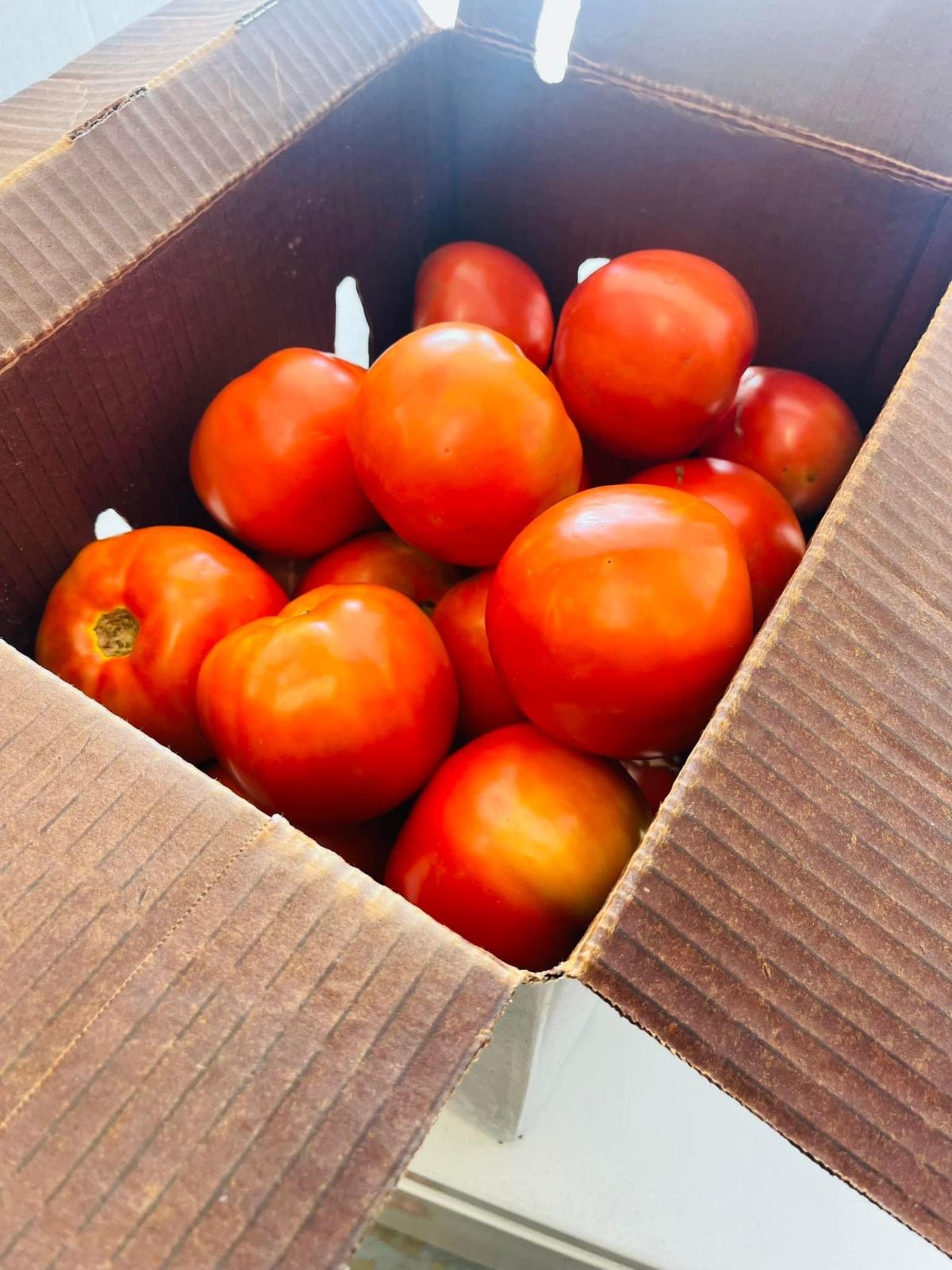
Ethylene gas is produced naturally by tomatoes, and this is what causes them to ripen and turn red. They will ripen faster if the gas stays nearer to them and doesn’t dissipate. This is why keeping your tomatoes in a closed container or confined space is best for ripening—it contains the ethylene without losing it, and one tomato helps ripen another.
A paper bag, cardboard box (ideally one that can be closed or covered), or an unused cooler (without ice or ice packs) will work well.
You can also wrap each individual tomato in paper or newspaper, but this is a tedious task if you have many tomatoes to pick off and ripen.
9. Aim for ideal moderated temperatures for ripening.
The best temperature range for ripening tomatoes is between 70 to 75F (21 to 23C). For the most part, room temperature in a house or garage will be fine, but the closer you can stay consistently in this range, the better, and the faster your tomatoes will ripen. Tomatoes stop ripening when temps fall too low (below 55F or 13 C), and they also stop ripening when temperatures are very hot, above 90F (32C). Avoid the high and low temperatures at all costs.
10. Use other fruit to speed up ripening.
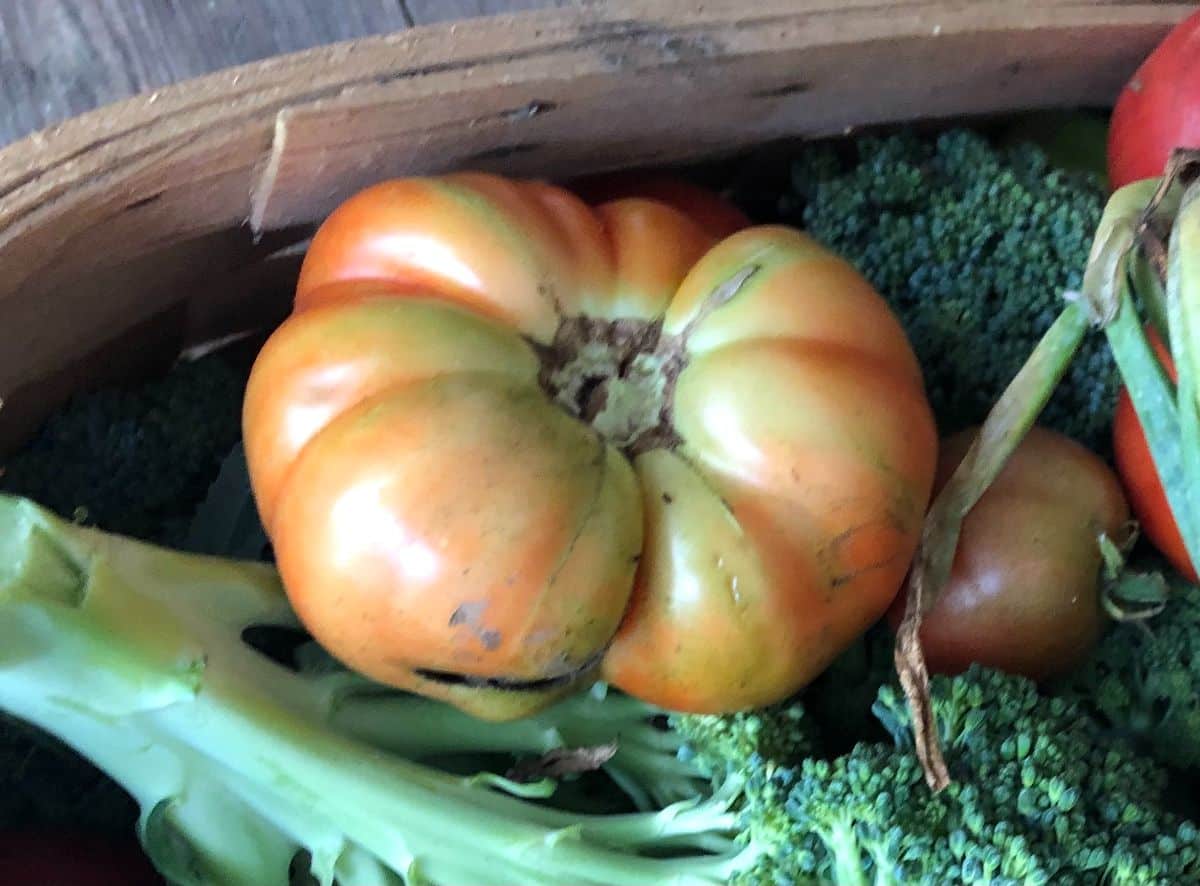
Other fruits give off ethylene gas, too, and if you put some ripe and ripening fruits in with your tomatoes, their ethylene gas can help your tomatoes ripen, too. The more you have, the faster it speeds ripening. Just place them in the closed container with your tomatoes.
Use one or two fruits in a paper bag and three or four in large containers (like in large cardboard boxes or coolers). Bananas are the top choice and the biggest ethylene producers, but apples are a good choice, too. If you use bananas, check them regularly because they get overripe faster and may need replacing more often.
11. Cold store some of the last and least ripe tomatoes.
By cold storage, we’re talking cool storage, like in a root cellar. As long as the temperatures are not too low (not below 50 to 55F, 10 to 13C), the tomatoes will keep ripening, albeit slowly. But this is a good way to have fresh homegrown tomatoes to eat long after the season has ended. Let them ripen slowly and in stages for continued eating. You may have tomatoes that stay good for two or three months.
You can store fully ripe tomatoes in a cold room, too, though they won’t last quite as long as those that were put in when they were under ripe.
12. Late-season tomatoes can be ripened on the plant indoors.
If you’re not sure how ripe the tomatoes on the plant are, if you don’t want to pick them off, or even if you just want nicely vine-ripened tomatoes and you have a frost coming, you can pull the whole plant, tomatoes, and all.
Dig the whole plant or cut it off at the base. Shake off as much extra dirt as you can, then hang the whole plant, unripened fruit and all, upside down indoors. Keep the plant protected and away from frost and freezing temperatures. Choose a place that will stay at least 55 F (13 C) and that will not freeze.
The tomatoes will pull the remaining moisture and nutrients from the plant, which can potentially get some stragglers to mature enough to the ripening stage, and the tomatoes will be as good as they can possibly be and still have a nice vine-ripened flavor.
A Trick to Test for Tomato Maturity
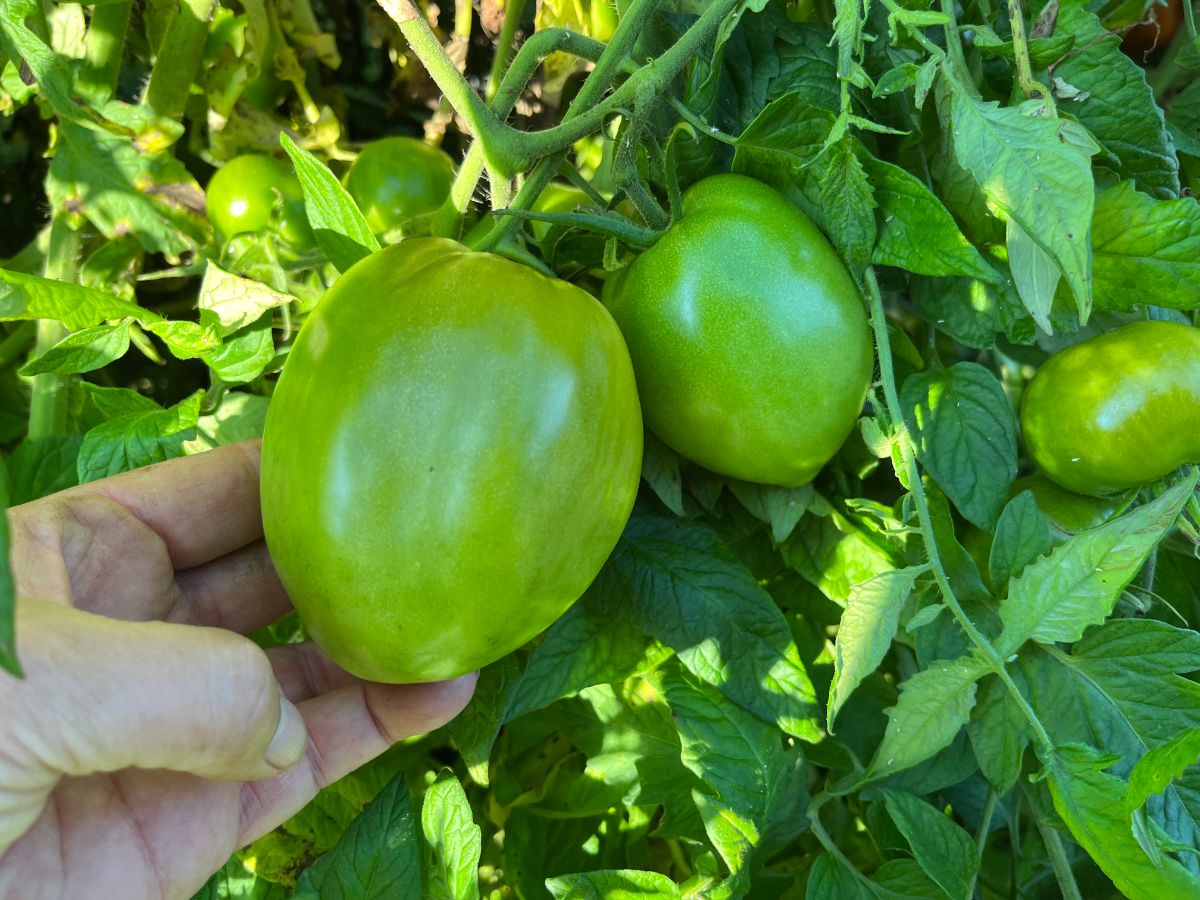
If you’re not sure if your green tomatoes are mature enough to ripen off the vine, you can test a couple to find out.
- Take two or three green tomatoes of about the same size off the plant. Aim for the size you are looking to harvest.
- Tomatoes should be about the size you would expect for the variety when ripe and ready.
- Cut the tomatoes in half.
- Inspect the interior.
- Tomatoes that are mature enough to ripen will have enough liquid in them for seeds to move out of the way of the knife. The inside will be gelatin-like (similar to the gel inside of a red tomato, only a little firmer and green).
- If the seeds don’t move and the inside is more solid than liquid gelatin, the tomatoes aren't quite ready.
- If you see seeds that were cut in half, the tomatoes probably aren’t mature enough because that means there wasn’t enough liquid for the seeds to move around inside the tomato. Mature green tomatoes would not be that solid.
- If there is a colored or red tinge inside the tomato, don’t worry. Tomatoes ripen from the inside out, so there can be color inside when there is none outside. This is also a definite sign that the tomatoes are mature and starting to ripen.
If you do this test and the tomatoes of an average [for the plant] size seem mature, go ahead and pick off all the tomatoes around that size. It should mean that the bulk of them are ready to ripen.
Removing Green Tomatoes to Ripen Off the Vine Helps Remaining Tomatoes Mature and Ripen
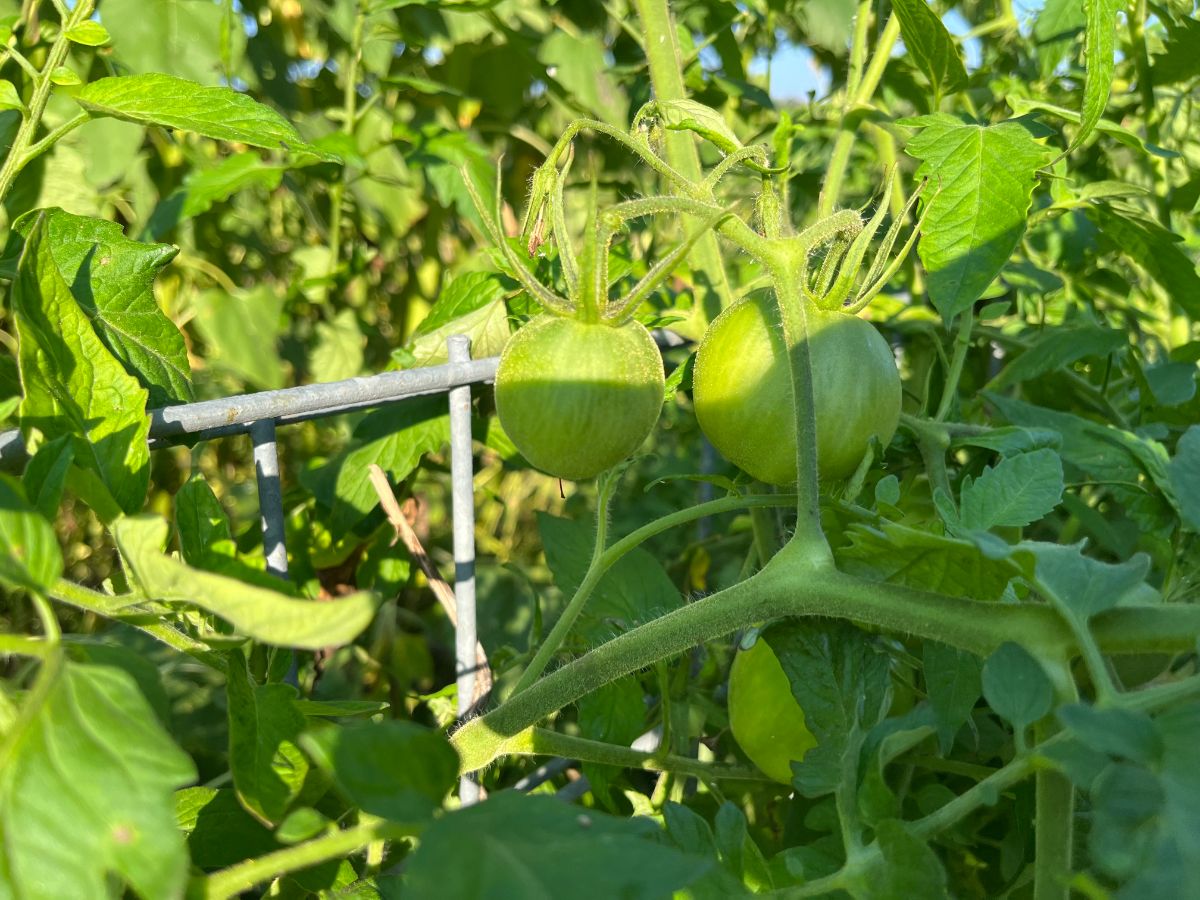
Many gardeners will resist taking unripe or underripe tomatoes off the vine, but there are often good reasons to do so. There are good reasons to remove early mature green tomatoes to ripen, too—you don’t have to only resort to this because a frost is coming.
Taking early mature tomatoes off the plant lets the plant send more energy to developing tomatoes. It allows those tomatoes to develop and mature faster. They will be larger and plumper because they are getting a more fair share of nutrients. It also allows indeterminate plants to keep blossoming which can increase the number of tomatoes and your overall yield.
Lightening the load of tomato plants has other benefits, inducing:
- Reduced end rot (on developing and developed unripe tomatoes)
- Less wasted fruit
- Lower chances of sun scald
- Speeds ripening of remaining tomatoes
- Less cracking
- Better sturdiness if transporting
- Removes and protects ripening fruit from pests and wildlife, including slugs, birds, hornworms, and ants
- Harvests fruit to insure against late blight (because those that are already picked to ripen can’t fall prey if they’re not on the plant when it hits)
- Less loss to frost and cold weather and less risk of losing tomatoes to a sudden, unpredicted temperature drop
- Lightens load on branches
- Reduces fruit exposure to the elements and weather
- Reduces plant breakage
- Allows fruit to keep ripening in controlled moderate temperatures during heat waves
- Gives a warmer place for tomatoes to ripen in cool weather
- More control over the ripening process and the timing of when tomatoes ripen
Flavor Is Just as Good from the “Breaker” Stage of Ripening and Beyond
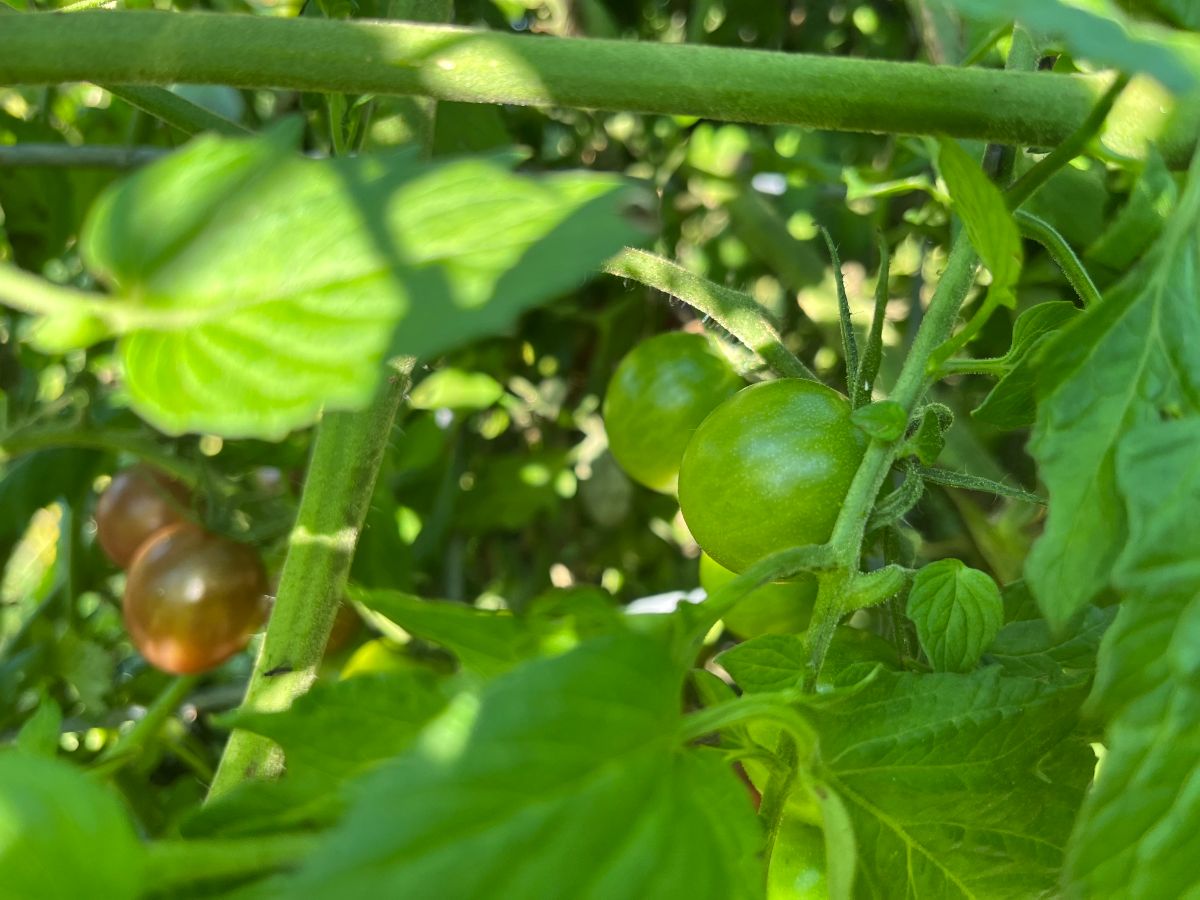
One concern people often have is that if they ripen tomatoes off the vine, the flavor and texture won’t be very good. If picked at the right stage, this is not true.
Researchers have identified six stages of ripening in tomatoes. The second of these two is called the breaker stage. Tomatoes are in the breaker stage once they start showing color other than green (a pink or light orange blush for most red tomato types, lighter color usually for yellow and orange varieties).
If there is a noticeable color of any color and it covers less than ten percent of the tomato, the fruit is in the breaker stage. This is a sign that the tomato has “broken” the green color and that the tomato is producing ethylene gas on its own. If you were to cut this tomato open, you’d see that the inside has even more color because tomatoes ripen from the inside out.
Once tomatoes hit the breaker stage, there is a layer of cells that form between the stem and the fruit body. When that forms, the tomato doesn’t draw anything from the parent plant anymore. So, according to plant experts, physiologically, the tomato is the same as a red ripe tomato—meaning that it has developed as much from the parent plant as it can and has everything it needs to complete ripening. Its flavor will continue to develop almost exactly as it would on the vine. Tomatoes don’t need sunlight to ripen, so that makes no difference.
The bottom line, according to leading universities, is that tomatoes that are picked at the breaker stage or beyond it and that are allowed to fully ripen off the vine are just as good flavor-wise as tomatoes that are left to ripen fully on the plant.
The difference is that you lose the advantages of lightening the plant’s load, and you lose the control over the ripening process. You expose your tomatoes to more potential environmental and weather damage, too. While the tomato is mature and not dependent on the parent plant anymore, diseases like blight can still ruin fruit if the spores spread to the mature tomatoes (because these diseases are spread by external spores.
The moral of the story? Don’t be afraid to pick tomatoes with a little color to let them ripen off the vine. There’s no noticeable loss of flavor (as long as you let them become fully ripe), and doing so can serve some good purpose. Don’t think your tomatoes will turn out like those tasteless varieties that are mealy and bland and sold in grocery stores. Those tomatoes become like that because of cold treatment and age, not because they were ripened off the vine.
If you can’t wait to enjoy those green tomatoes, or if you have more than you need to use as ripe tomatoes, check out this article on cooking and preserving green tomatoes.
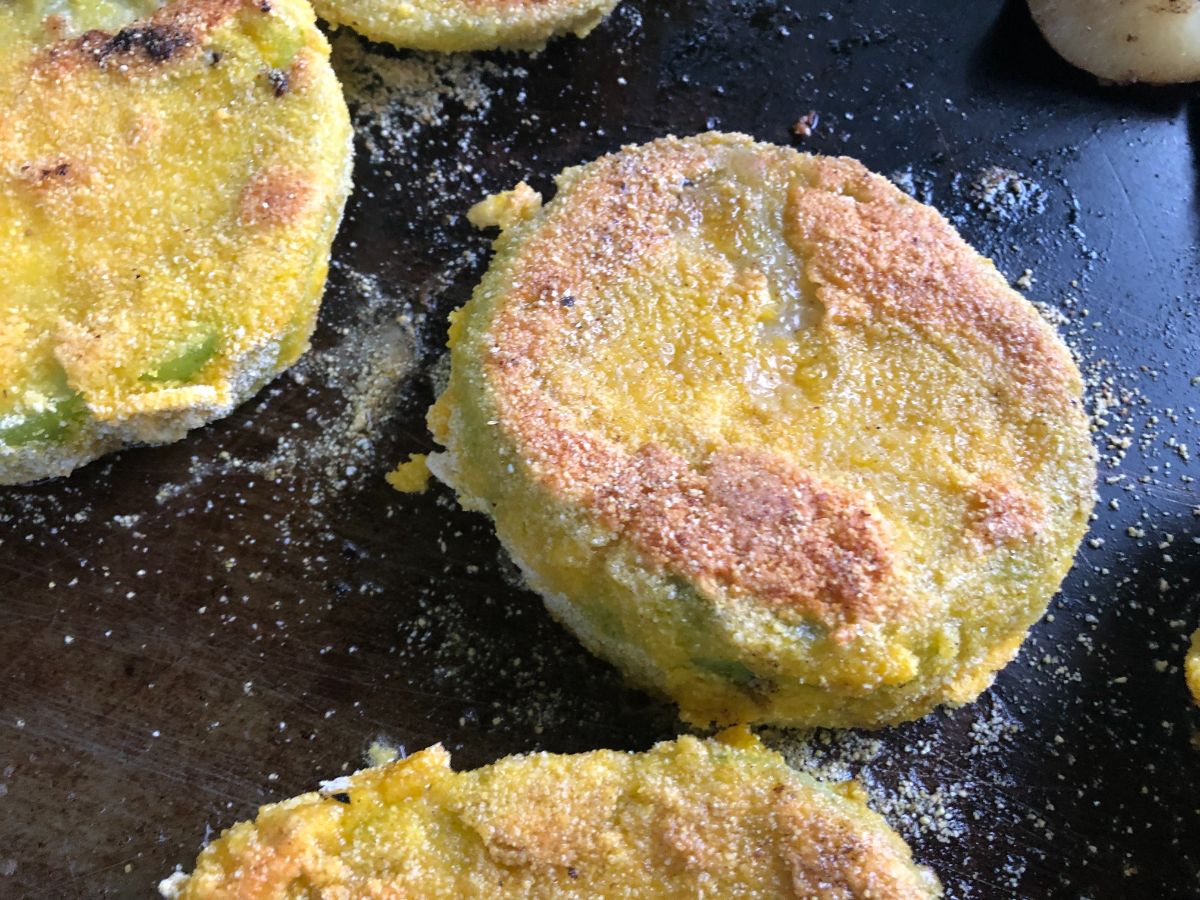

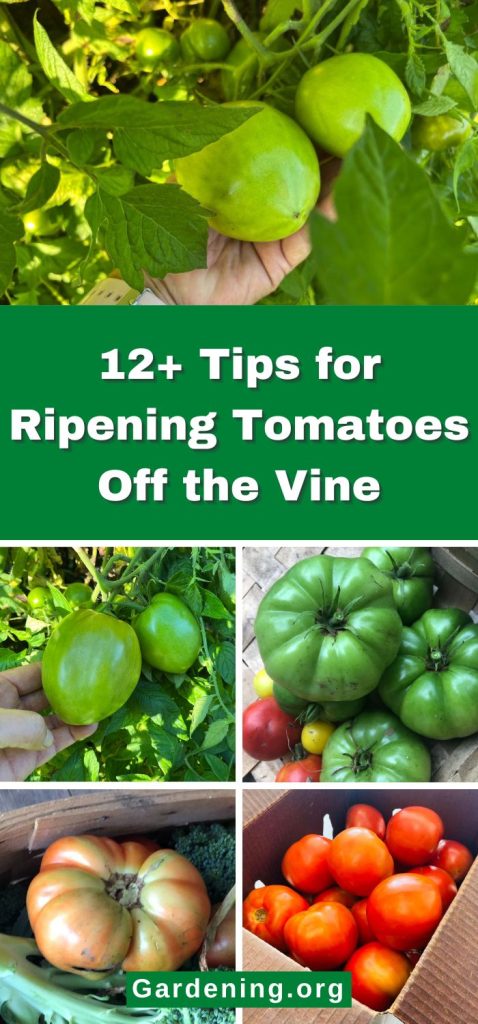
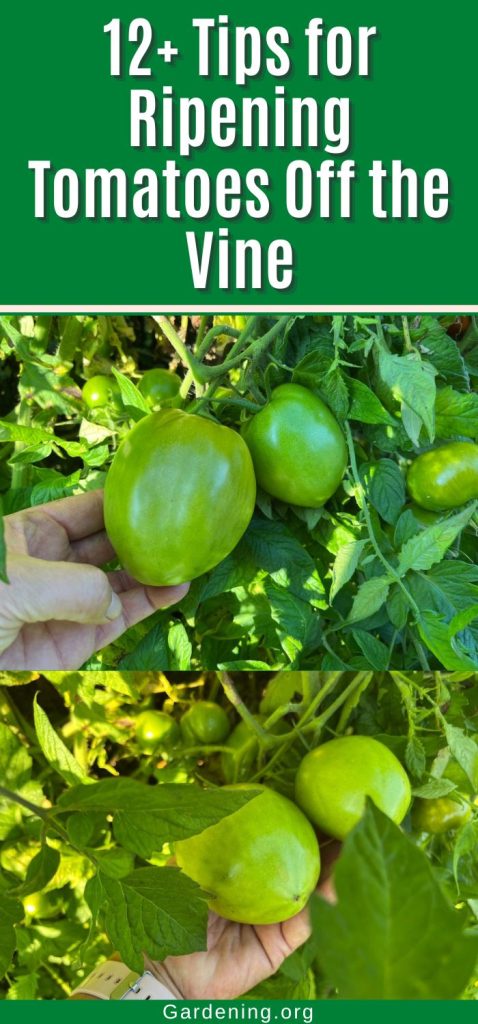
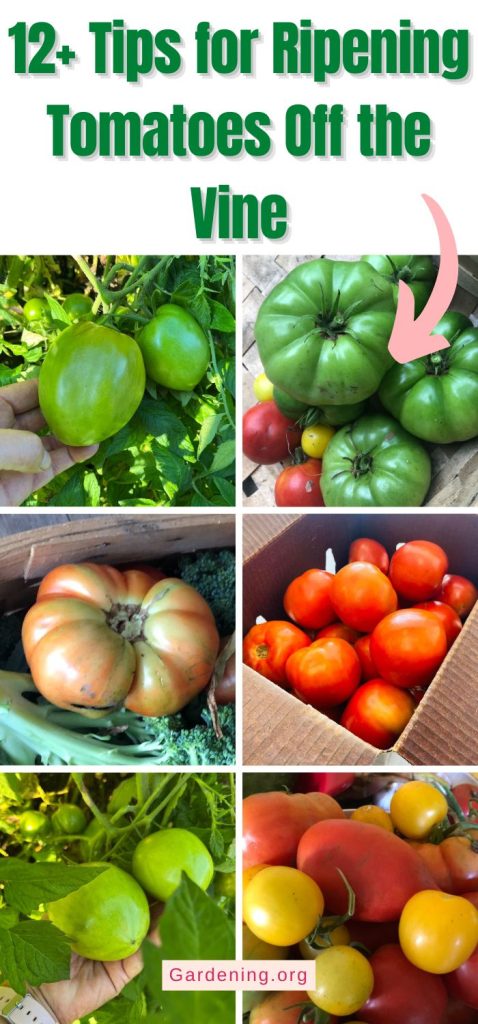


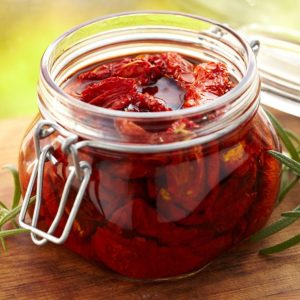
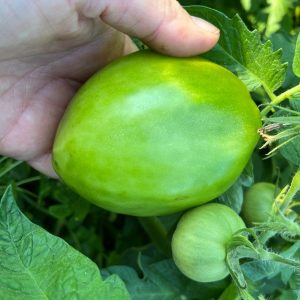
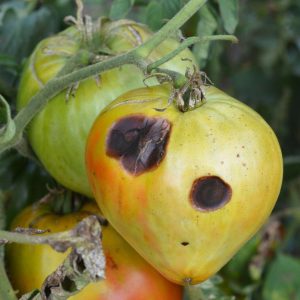
Leave a Reply